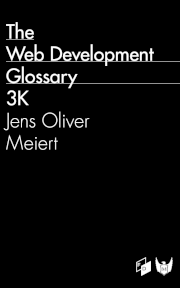HTML Concepts: Browsing Contexts
Published on September 30, 2022, filed under Web Development (RSS feed for all categories).
Welcome to another episode of HTML Concepts! Today, browsing contexts—what is that?
The starting point should be the HTML specification (as always—this, and not even MDN, is the source of truth). What does it say?
A browsing context is an environment in which
Documentobjects are presented to the user.
This is cryptic, but the specification goes on to clarify:
A tab or window in a web browser typically contains a browsing context, as does an
iframeorframes in a frameset.
This sounds fundamental and indeed, the browsing context is a key concept:
A browsing context is where a user agent displays a document—which often is a tab or window, but can also be an iframe or frame. Every browsing context has its own DOM, origin, navigation and history, and also cookies.
That is, every site or app has a and its own browsing context—and that’s why this is such an important, yet also basic concept.
I’m not sure I made a much more complex subject overly simple, or a simple subject overly complex! Please let me know.
About Me

I’m Jens, and I’m an engineering lead and author. I’ve worked as a technical lead for companies like Google and as an engineering manager for companies like Miro, I’m close to W3C and WHATWG, and I write and review books for O’Reilly and Frontend Dogma.
With my current move to Spain, I’m open to a new remote frontend leadership position. Feel free to review and refer my CV or LinkedIn profile.
I love trying things, not only in web development, but also in other areas like philosophy. Here on meiert.com I share some of my views and experiences.
Read More
Maybe of interest to you, too:
- Next: Website Optimization Measures, Part XV
- Previous: 2022: 0 of the Global Top 100 Websites Use Valid HTML
- More under Web Development
- More from 2022
- Most popular posts
Looking for a way to comment? Comments have been disabled, unfortunately.

Get a good look at web development? Try WebGlossary.info—and The Web Development Glossary 3K (2023). With explanations and definitions for thousands of terms of web development, web design, and related fields, building on Wikipedia as well as MDN Web Docs. Available at Apple Books, Kobo, Google Play Books, and Leanpub.
